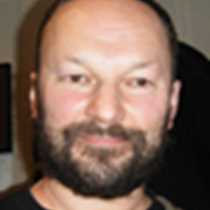Gisborne, Aotearoa, New Zealand
‘Te ra ataahua’, a beautiful day, was the Maori expression for today’s experience in Gisborne. Our party was treated to a welcome on to Pakowhai Marae, the living heart of the community for the Whanau a Kai people of Patutahi. The small village of Patutahi is located in fertile countryside just outside of Gisborne, on the East Coast of New Zealand’s North Island. Whanau a Kai are one of the important Maori tribes of the Gisborne area. The region is a major centre for Maori, the indigenous Polynesian people of New Zealand, or Aotearoa as it is known in the Maori language.
Our local guide, Anne McGuire, is related to most of the Gisborne tribes and was therefore able to arrange a visit to a place not normally frequented. Pakowhai is a marae, a community centre for traditional Maori communities. It is both a place of meeting for those who still live in the rural area and a point of returning for the many scattered members of the tribe who now live throughout New Zealand and overseas. The Whanau a Kai people use their marae for funerals (tangi), meetings, social gatherings and as a learning center. They welcomed us on to their marae, but it was our privilege to be there. This place is effectively a people’s community space, rather than an operation set up for tourists.
Our party was welcomed on to the marae in a traditional manner. We were called on to the marae by a karanga (chant) from one of the women of Whanau a Kai, to which our guide Anne answered on our behalf. We were then welcomed by a speech in Maori from Dave Hawea, a rangatira (chief) of Whanau a Kai. Dave’s speech was followed by a song (waiata) of support from the Whanau a Kai people. We replied with a speech from me (in Maori) and another from Larry (in English), each of which was supported by fine singing from the assembled guests. Hosts and guests then greeted each other with the traditional Maori hongi or pressing of noses.
With the formalities over, one of the local people, Tei Nohotima, explained the welcome ceremony and some of the aspects of the marae, teaching us a few words of Maori in the process. Following a cup of tea and a snack we proceeded into the wharenui, the carved and painted meeting house. There, master carver Tiopera Rauna explained some of the meanings and functions of the house. Tio showed us a range of taonga puoro (traditional musical instruments), which he had made himself. He explained their functions and played them for us. Tei Nohotima then treated us to a series of imitations of the behavior and calls of New Zealand native birds. The cultural experience was then rounded off by the performance of a Maori cultural group who demonstrated waiata (songs), poi (an action song and dance) and haka (the war dance). One of the songs sung was about local hero Paikea, the subject of the film Whale Rider. The haka performed was ‘Ka mate’, famous as the dance performed by New Zealand’s world champion rugby team the All Blacks.
The whole morning was a truly uplifting experience of a living culture, which we were privileged to be invited to participate in. The afternoon was spent visiting the nearby Arboretum and then one of the many fine local vineyards before returning to our ship. It was truly a day to remember and one that gave a deep insight into the heart of Aotearoa, the essence of indigenous New Zealand.




